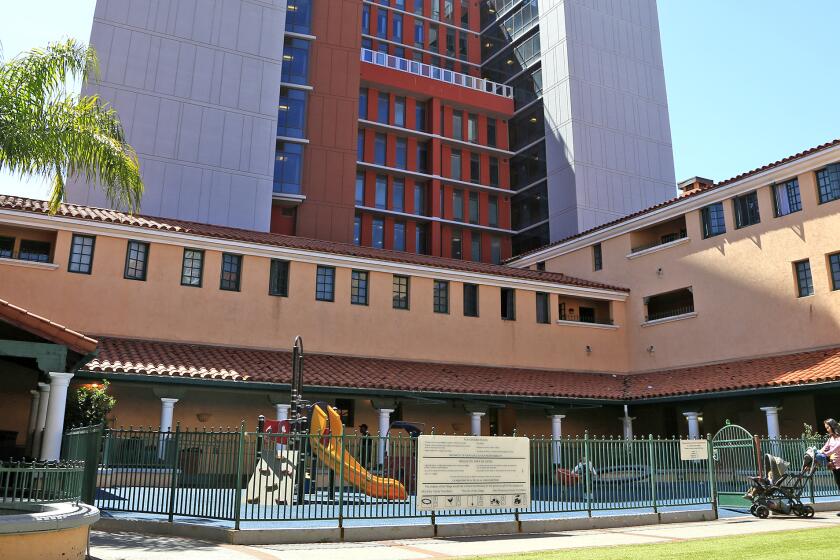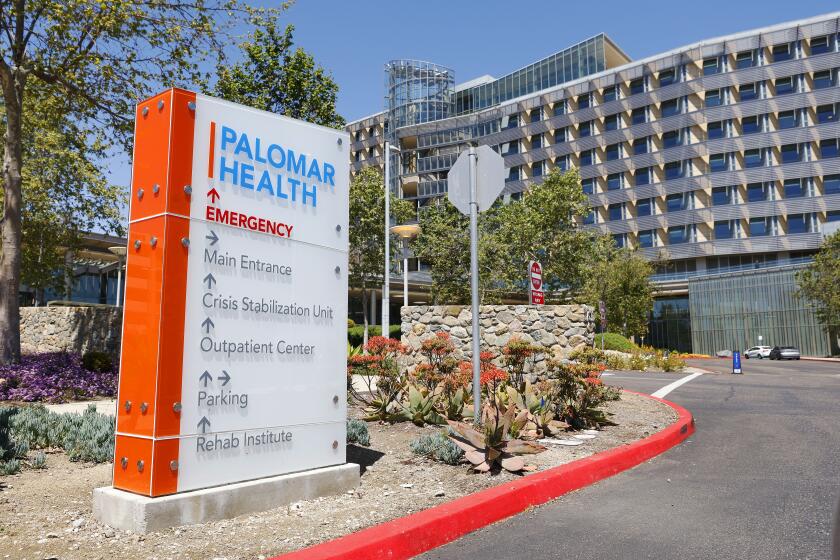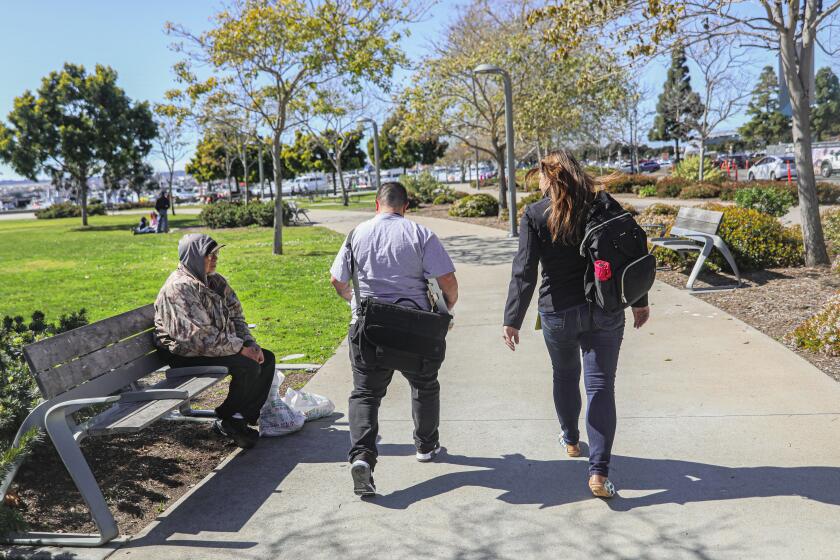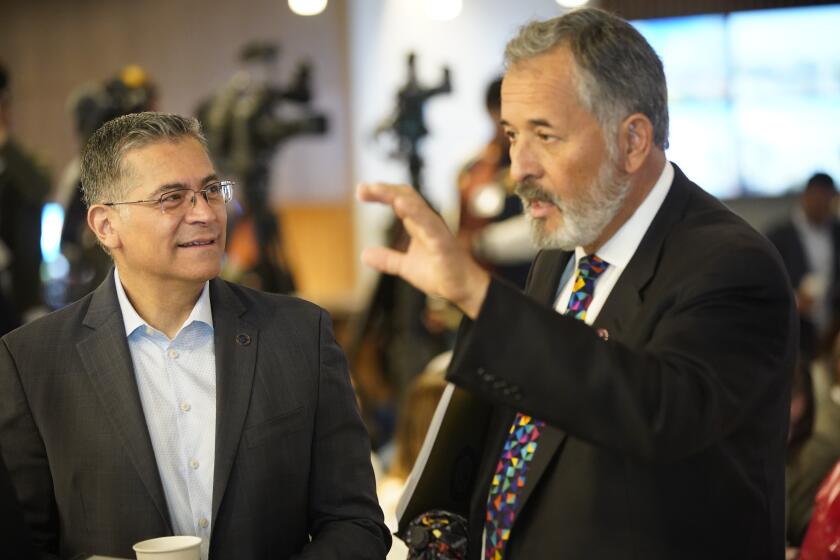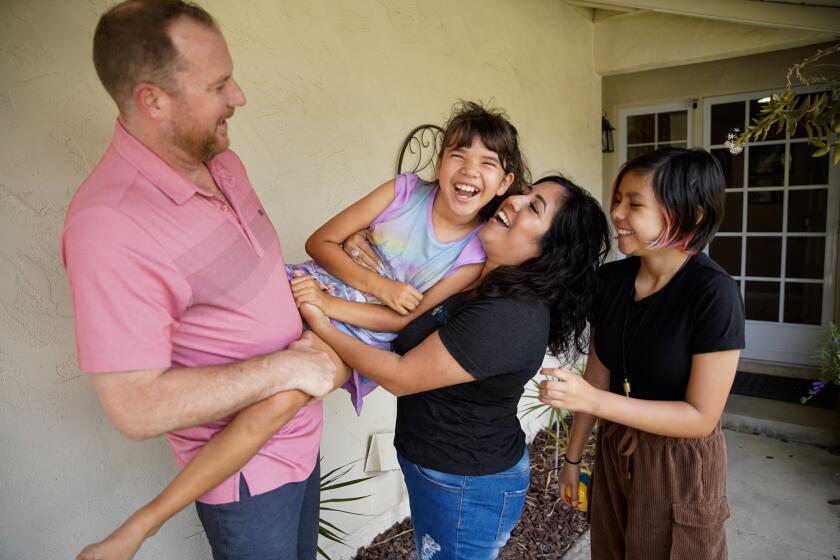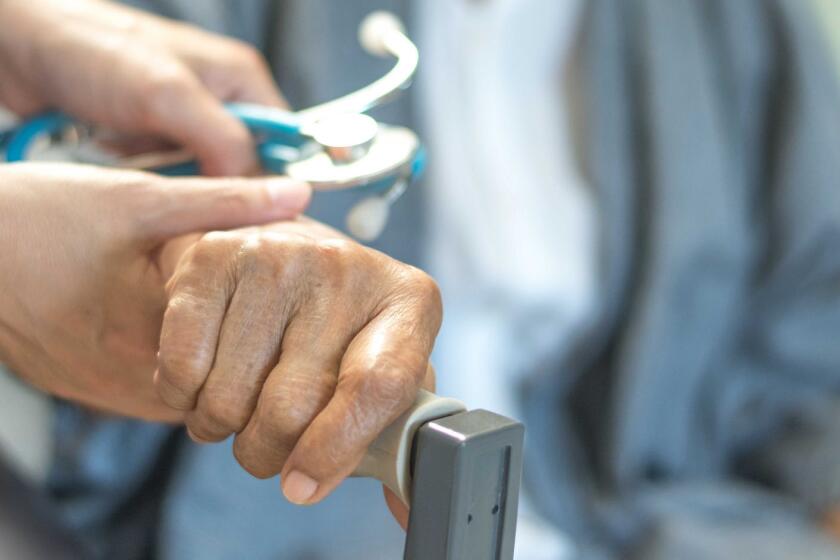Pediatric genetics researcher returns to Rady
For about a year now, Cynthia and Danny Heinemann have known the cause of their daughter’s severe autism: a previously undetected genetic mutation.
On Friday, they learned that they are not alone.
The couple and their 10-year-old daughter, Lisel, met with Dr. Joseph Gleeson at Rady Children’s Hospital San Diego, where the pediatric neurologist shared a paper published in May by a research group in Seattle.
The study’s results showed that seven others have been found with the mutation discovered in Lisel’s genetic code — and all exhibit similar symptoms.
Suddenly, a mother realized there were other mothers with whom she could compare notes on everything from seizure-medication dosages to potty-training advice.
“I’ve been in the dark for 10 years and now I have the answer,” Cynthia Heinemann said. “It’s been agony not knowing.”
Moments like these are ultimately why Gleeson returned to San Diego just one year after leaving for a prestigious post at The Rockefeller University in New York, he said.
Gleeson has accepted an endowed chair in neuroscience at the Rady Pediatric and Systems Medicine Institute, a new enterprise born of a $120 million gift from San Diego philanthropists Ernest and Evelyn Rady. The position is supported by a $2.5 million fundraising campaign by the Rady Children’s Hospital Auxiliary.
While the work at Rockefeller was rewarding and Gleeson intends to keep a lab there, he said it was working with patients that caused him to boomerang west.
“To be part of a new genome center in New York was exciting, but I came to realize that I need to be part of an operation where there are patients being seen,” Gleeson said.
While it might seem like genetic work is done mostly in the lab, the physician said his breakthroughs have often come not just from looking at data but also from serving as his subjects’ doctor, getting to know them individually.
“They might say something to you that changes the way you think about a disease. You might see something in that brain scan that changes the kind of disease you think they have,” Gleeson said.
This dual role of researcher and clinician makes Dr. Donald Kearns, chief executive at Rady Children’s, giddy about Gleeson’s arrival.
“He brings an unparalleled scientific mind, but he also brings the passion of having worked with patients. ... It’s a hell of a deal,” Kearns said.
Gleeson’s arrival also gives the nascent institute instant credibility.
Dr. Ian Krantz, who runs a genetic testing program at Children’s Hospital of Philadelphia, said Gleeson is well-known for his work in identifying genetic causes for neurological conditions such as epilepsy and autism.
“He is a leader in the field of neurogenetics,” Krantz said. “He’s done groundbreaking work, and it’s nice to see him coming back to a children’s hospital. It’s like he’s coming back to the fold, and he’s ideally positioned to head up such an effort.”
A recent example of Gleeson’s work involves a Middle Eastern family whose children suffered from autism and severe epileptic seizures that led Gleeson’s lab to isolate a genetic mutation that blocks absorption of a key amino acid. An ongoing program to supplement that amino acid is showing results in reducing seizures.
Researchers have since detected the same mutation in other children with autism, so Gleeson’s team has provided a new treatment option for numerous patients.
“We’re getting emails all the time now from doctors who have found mutations in genes that we have first spotted in special populations,” Gleeson said.
By working with individual families, including the Heinemanns, he has identified 200 genetic mutations he hasn’t even published yet. After such genes are discovered, it can take years in the lab to find a potential therapy, meaning that this kind of work demands a close relationship between scientists and subjects.
“The families are partners in this whole process,” Gleeson said.
Moving from single patients, or handfuls of patients, to larger groups is the fundamental goal of a growing number of “translational” genetic institutes starting to pop up across the nation.
The PediSeq project at Children’s Hospital of Philadelphia is at the forefront of the translational push. Krantz, the program’s director, said a big part of the vision is to understand how specific mutations affect a patient’s physiology. By sequencing and comparing hundreds of thousands of genomes, as well as the medical records of the patients they were collected from, it will get easier and easier to move from the lab to the bedside.
“I have no doubt that, in the not-too-distant future, whole genome screening will be used with every newborn,” Krantz said.
Sequencing all children seen at Rady Children’s is a marquee goal of the hospital’s new institute. But there is plenty of work that can be done based on information that has already been collected.
Gleeson comes back to San Diego with, quite literally, a truckload of possibilities.
In the past week, he regularly checked on the progress of a semi tractor-trailer making its way from New York to San Diego carrying a large steel tank filled with liquid nitrogen and about 100,000 DNA samples collected by his lab from about 3,000 patients and their family members.
To date, most of those samples had been analyzed using a technique that maps out a short section of the overall DNA structure called the “exome,” which controls protein production and can cause many diseases.
However, the exome is only about 1 percent of the genome. Recent advances in low-cost whole-genome sequencing, many of them coming from San Diego-based Illumina, offer an opportunity to re-examine those previously-sequenced samples in the lab’s storage freezers.
Gleeson said doing so is an exciting prospect, because looking only at the exome has not always yielded results.
“We have many, many cases that are unsolved after sequencing. At best we have the answer in only about half of the cases. That suggests that the answer is not in the exome, and we want to see what we’ve been missing,” Gleeson said.
Get Essential San Diego, weekday mornings
Get top headlines from the Union-Tribune in your inbox weekday mornings, including top news, local, sports, business, entertainment and opinion.
You may occasionally receive promotional content from the San Diego Union-Tribune.


